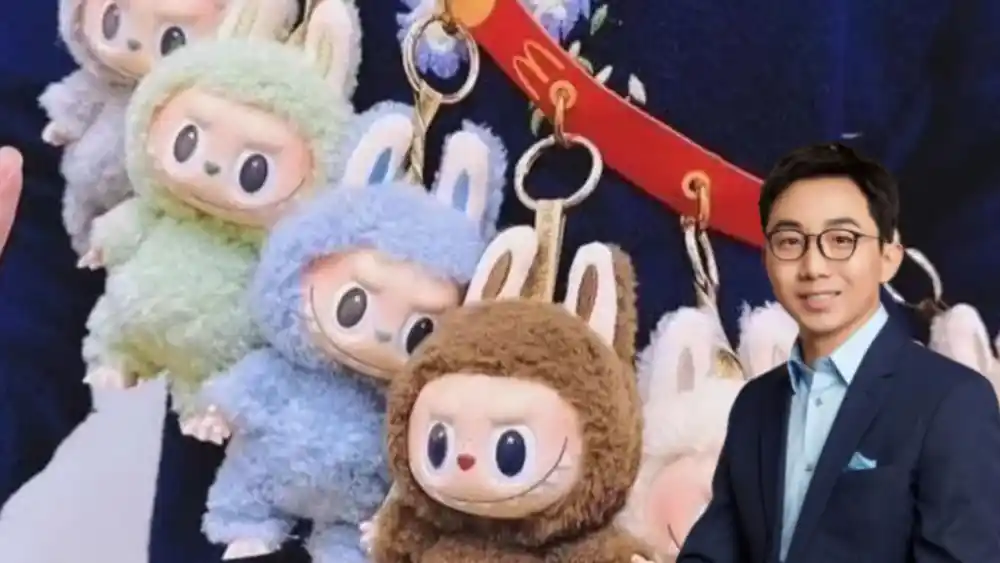
Rs 50,000 for a Labubu Doll? The Viral Buzz Around Limited Edition Labubu Figures
What do luxury fashion, celebrity fandom, and viral internet culture have in common? Right now, the answer is one quirky collectible: the Labubu doll. Once a simple blind-box toy, Labubu has become a global obsession. Some rare versions fetch six-figure sums, while others—still priced around ₹50,000—ignite passionate collector rivalries. Here’s a deep dive into why Labubu is trending, how it became so valuable, and what it reveals about modern hype culture.
1. Origins: From Nordic Folklore to Pop Mart Phenomenon
Labubu was originally created in 2015 by Hong Kong–born artist Kasing Lung, inspired by Nordic folklore and his picture book series The Monsters. In 2019, Chinese collectible giant Pop Mart picked up the character and began distributing blind-box editions—sealed packages where you never quite know which variant you’re getting.
This mysterious format tapped into psychology: the thrill of chance, the hope of rare finds. Over 300 variants of Labubu have been released by mid-2025, ranging from a $15 mini vinyl figure to a ₹70,000 mega edition
2. Celebrity Spotlight and Global Stardom
Labubu might have remained niche—if not for its explosion into celebrity culture. In April 2024, Lisa from BLACKPINK was spotted with one, instantly igniting global fandom . Shortly after, Rihanna, Kim Kardashian, Dua Lipa, even David Beckham were seen flaunting these quirky figures
High-fashion icons like Marc Jacobs have gone further—turning Labubus into style statements for accessories like Hermès Birkin bags . The blend of high-end fashion and toy collectibility cemented Labubu’s image as both whimsical and luxurious.
3. Blind-Box Scarcity Meets Exploding Demand
Pop Mart’s blind-box strategy—coupled with limited edition runs and “secret” figures—created a perfect storm. Certain rare variants carry 1-in-72 odds, making them highly coveted
In 2024 alone, blind-box sales fueled a staggering 726.6% year-over-year revenue jump for Labubu, contributing approximately $418 million to Pop Mart’s earnings . Overseas sales skyrocketed by 480% in early 2025
4. Record-Breaking Auction Prices: From ₹50k to Crores
The escalation of resale prices is astounding. While typical figures are in the ₹3,000–₹10,000 range, limited runs and larger editions have sold for life-changing sums:
-
A 4‑ft mint-green Labubu sold for ₹1.2 crore (~$150,000) at a July 2025 Beijing auction.
-
Another giant brown sculpture fetched over ₹1 crore.
-
Deluxe collaborations—such as with K-pop group Seventeen, Sacai, or Ultraman—resell for ₹11,000 to ₹3 lakh.
-
More mainstream editions hover around ₹2–3.5 lakh.
In India, select limited editions are now trading for Rs 50,000, making them aspirational even for urban Gen Z collectors—a symbolic price point in their local markets.
5. Fan-Driven Hype and Internet Culture
Social media has fueled the frenzy:
-
A tailor was recently filmed customizing couture outfits for a pencil-case-sized Labubu—sparking viral buzz and conversations around emotional consumerism.
-
Shocking conspiracy theories have circulated—some users claim Labubus are demonic or cursed, a tongue-in-cheek legend that backfired into meme territory.
-
Meanwhile, reselling scams and “Lafufu” counterfeits have become so rampant that Reddit threads are filled with warnings:
“It genuinely sucks how people are willingly paying for these… fake Macarons”
“When I called them out about the higher prices… they told me to F off”
6. Market Frenzy and Ethical Concerns
The explosion of resale and scalping has sparked backlash:
-
Buyers face paywalls from bots, live-stream resellers, and inflated markups—some items listed 5x–14x their retail price.
-
Regulators in Scotland and China have issued consumer alerts about fake dolls and unethical hype marketing.
-
Analysts warn that saturation may soon cap the market: once novelty fades, many variants could resell below original prices.
7. What It Says About the Collector’s Psyche
The Labubu phenomenon reflects deeper cultural patterns:
-
Scarcity + Surprise = Emotional Purchase Power: Blind-box mechanics hijack excitement and dopamine.
-
Celebrity Endorsement = Instant Social Currency: One snap from Rihanna or Lisa sends prices soaring.
-
Toys as Fashion Statements: From runway to red carpet, Labubus are being worn and styled like accessories.
-
Online Culture Amplifies Everything: Viral memes, conspiracy theories, unboxing videos—each accelerates the hype.
8. Looking Ahead: Is the Hype Sustainable?
Pop Mart aims to double overseas sales by 2027, banking on global collector interest. But can Labubu maintain its momentum?
Potential headwinds include:
-
Market saturation and reduced novelty
-
Regulatory scrutiny over resale and authenticity
-
Consumer fatigue
-
Competition from new collectible brands
However, as long as celebrity influence and social media fever continue, Labubu is likely to remain a defining collectible of this era.
9. So, Is a ₹50,000 Labubu Worth It?
It depends on what you value:
-
Art and design: For fans of good design and storytelling, Labubu’s Nordic-inspired charm has real appeal.
-
Community thrill: The hunt—blind-boxing, unboxing videos, hunting rare editions—is a cultural pastime.
-
Status and luck: Owning a rare variant can convey prestige among collectors.
But beware:
-
Supply is limited, and bargains are rare
-
The market is volatile—some figures may lose value quickly
-
Counterfeits are rampant; verification is crucial
If you’re buying for joy, creativity, or community, the purchase might be meaningful. But if you’re speculating for profit, tread carefully.
Final Takeaway
The Labubu doll, once a playful character by Kasing Lung, has become a global symbol of modern hype. From ₹50,000 limited editions in India to ₹1 crore statues at auctions in China, it shows how a “cute monster” can command luxury toy status.
Labubu isn’t just about toys. It’s a fascinating case study of celebrity influence, internet culture, scarcity economics, and consumer psychology. Yes, a ₹50,000 Labubu doll might raise eyebrows—but behind it lies a story about who we are and what we value in the digital age.

